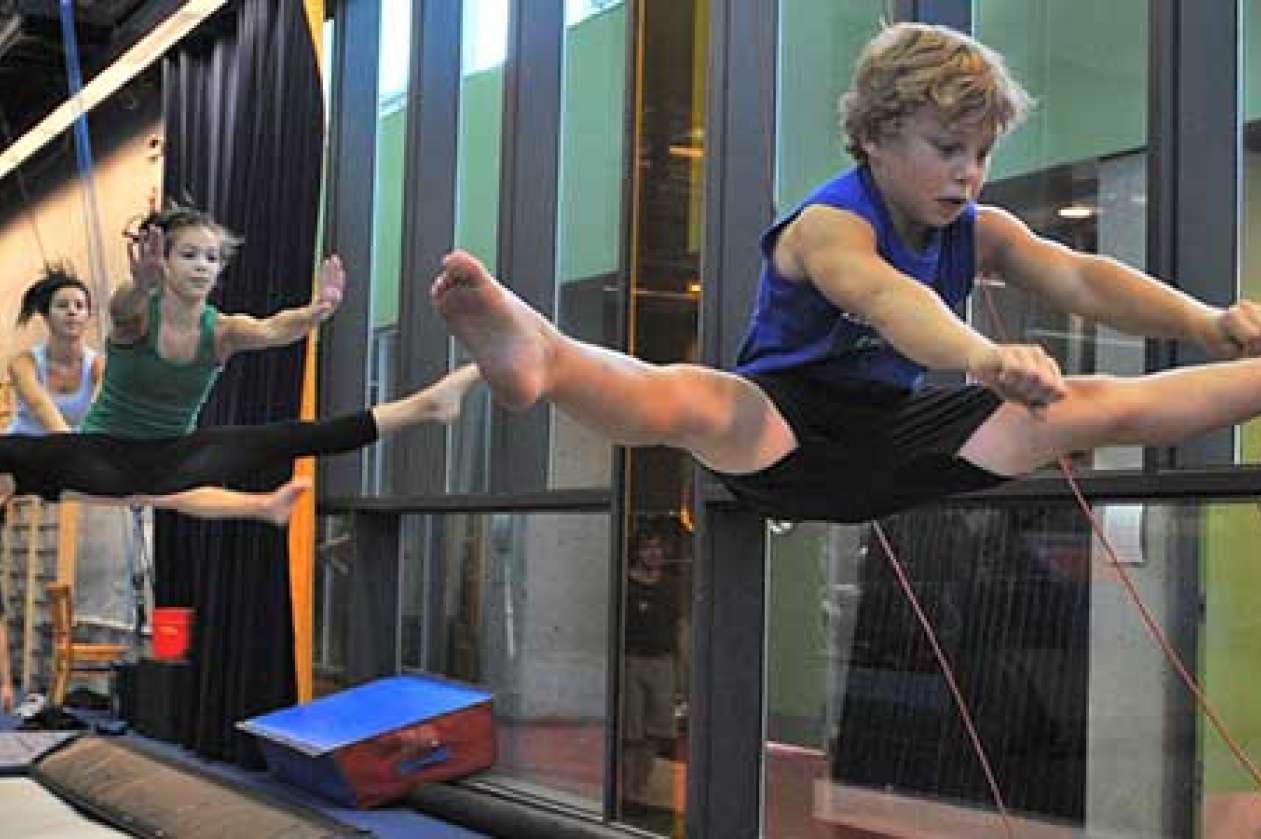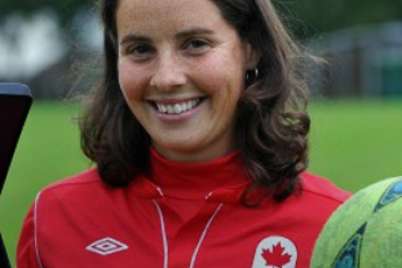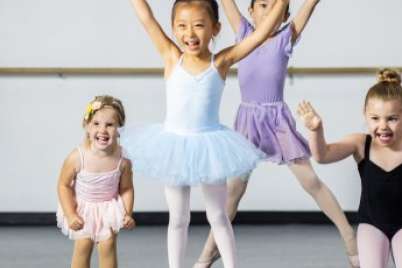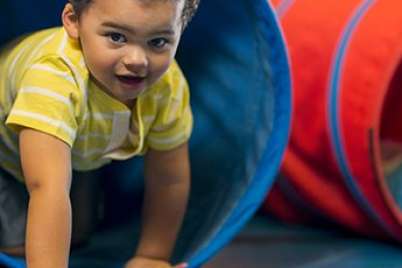
Running away with the circus school
As director of research and teacher training programs at the National Circus School (NCS) in Montreal, Patrice Aubertin’s main interest is movement with a purpose. It just so happens that the movements he and his staff work on come from the circus arts.
The school is an institution for higher education. Its primary mission is to prepare circus artists through a complete spectrum of professional programs including the Preparatory program, Circus and High School Studies, Diploma of Collegial Studies, and Teacher Training Programs.
We caught up with Patrice so he could tell us about the school, and so he could share his thoughts on physical literacy.
Q. The circus school teaches adults to become instructors and trainers, but it also provides recreational and more intense programs for kids as young as 8 years old. Do these kids have to be super athletes to join the National Circus School?
We have the same philosophy as when we train adult teachers: It has to be fun and creative. By no means do kids have to be super athletes when they start our beginner’s programs. We operate in the same way as a recreational center does with its entry-level programs: Kids try it to see if they like it. In that sense, circus arts is used as a means to get kids interested in some form of physical activity.
We of course initiate the kids into the five circus families (juggling and object manipulation, acrobatics, equilibrium, aerial and acting) but also offer programs that are more hybrid which include acrobatics and Parkour [Editor’s note: also known as free-running]. This program uses the environment to get kids running, jumping, twisting, landing, and climbing. Kids love it! By doing this they are basically touching all the components of circus.
If the kids choose to pursue circus arts further, they can enter our high school and circus program, which is similar to other “sports and studies” programs: they take circus arts classes half the day and attend academic classes in the other half.
Then, if they are motivated to become high-performance athletes, they can apply for a three-year professional program that leads to a Diploma of Collegiate studies in circus arts. But that is another story.
Q. What is physical literacy according to you?
Personally, it provides me freedom of choice of what it is that I will be doing.
It’s a means by which I can decide to play soccer if I choose too and be confident enough to have fun, or go skiing, or ride my bike, or do circus, or go climbing, or do physical theater, or anything else. It gives me choices and control over my life.
The biggest gain of physical literacy is empowerment.
If I transpose that to kids and we give them the tools to feel comfortable and increase their range of movement vocabulary and increase their range of environment to feel comfortable in, then they are pretty much set up to face whatever will come their way.
Q. Are you physically literate?
Hum … Yea, I think I am … probably not as much as I would like to be, but my background in gymnastics helps.
There is stuff I would like to do that I don’t do. I may be physically literate and not talented for some stuff [laughs].
Being exposed at a young age to a fairly wide movement vocabulary such as gymnastic does provide me with a good sense of where my body is in time and space. You can put me on skates, or in water, on ice or on snow and I will manage. I may not be super good right away, but I will not be lost, nor will I get discouraged because I feel inadequate. Once you have learned how to manage your way in various environments, it no longer matters what type of environment you are in. You will increase the likelihood that your activity will result in a positive experience.
Then I may choose to spend 10 years of my life fine-tuning my snowboard skills, but I know that I will not be lost the first time I try it. I can relate to the experience because its something that I lived, maybe differently, but I lived it many times in my childhood.
Q. You make a very interesting link between physical literacy and the arts.
I have explored painting and there is an understanding that I have of painting that I can trace back to my years of being a gymnast. You cannot be disconnected from your body while you move your body parts in ways to get the transposition of a feeling on a canvas. My ability to control my muscles regardless of what it is that I do, either playing music, doing theater, painting, doing sports, or dancing is linked to my physical literacy.
I believe physical literacy to be the most efficient way to develop a vast and overlaying movement repertoire. These movements may be used to play the 88 keys on the piano and allow for artistry by different combinations and rhythms. But equally these movements could allow for body positions, combinations, and rhythms that would create a very touching, yet spectacular, juggling circus act. Yet, the same movement repertoire could lead to gymnastics. The engine that enables this to happen is physical literacy.
Essentially the difference is in the meaning, not in the body actions, since they are similar from one activity to the next. There are body positions that a physical actor will take that are similar an acrobat’s. The purpose is different, but the movement is the same. It is all interrelated.
Q. What do your teachers do to develop physical literacy in the kids they teach?
The idea is for our teachers to develop a pedagogical circuit with different levels that provides tons of opportunity for kids, with very high motor engagement, and very little rest time because kids are there to do stuff and have fun.
Teachers are trained to look at many different ways to do the same movement and play with concepts. We look at movement with a purpose not only from an acrobatic perspective, but also from an artistic perspective. Looking at many different ways of doing the same movement with different purposes and in different types of environments is a way to develop physical literacy.
Essentially, teachers are environment providers. They need to build environments in which kids will increase their repertoires of movement.
Q. What are a few simple suggestions for parents that want to develop the physical literacy of their kids?
I would say providing your young kid with a vast array of experiences is a pretty good thing. Although, I am not necessarily opposed to kids finding one activity they really like and then to let them go for it. Passion is fuel and if you are passionate about something and you get going, that passion will most likely make it that you will be exposed to various types of experiences.
My parental job is not to overprotect my kids. My parental duty is not about providing an environment in which my daughter does not fall at all. My parental duty is to provide her with experiences that will give her the abilities to allow her to fall safely.
The most important advice I can give is to be careful to not be overly protective. I go to playgrounds and hear parents tell their kids to be careful to not fall and break their arms. That is crazy stuff! You don’t say that to your kids. I would say parents take a breather and just relax!
Q. How long does it take to develop physical literacy?
I am tempted to say it takes a lifetime, but at the same time you get immediate effects from practicing something. It’s kind of a paradox because it does not take a long time for you to get the benefits of it, but it is a life course type of thing. It’s not an end point. It’s a process. It’s not like strength training where you get to a point where you can do 10 pushups.
For example, when kids learn to do forward rolls, have them do it on an inclined slope, have them roll down, roll up and roll sideways. From a brain perspective you get an immediate effect.
When is Physical literacy enough? It’s an infinite type of learning… How long does it take to stick is a bigger research project.
Q. Any advice to parents that have kids who want to run away and join the circus?
Well … let them! [laughs]
If your kids want to get involved with the circus, give them opportunities in dance, theater, acrobatics, and equilibrium activities. Also in climbing, throwing, and catching.
Most of our students enrolled in the collegiate program come with a strong ability to move, to move with a purpose, and do acrobatics or aerials, but overall they are rarely specialized in one little domain.
Photo credit: Roland Lorente






Sign me up bb <3 xx
This program would be a perfect fit for our 8 year old. Is there anything like this offered in Richmond, BC?